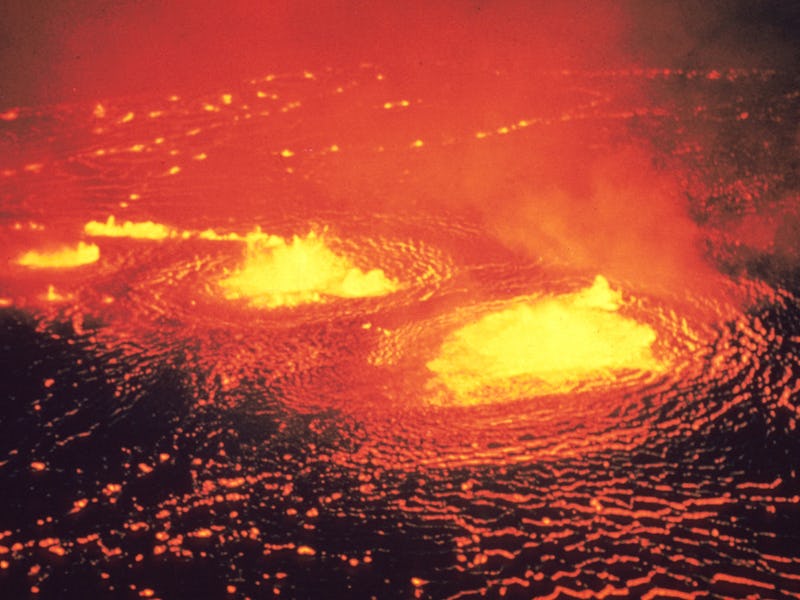Whoa, There's a Lava Ocean in Space, on Jupiter's Moon Io

Astronomers have mapped a massive, violent ocean of lava on Jupiter’s moon Io in more detail than ever before. The research was published Wednesday in Nature, revealing just how hot it can get on the most volcanically active spot in the solar system.
The lava ocean is called Loki Patera — Loki for the Norse trickster god, and patera meaning a bowl-shaped volcanic crater. It is 127 miles across, and larger in surface area than Lake Ontario.
“If Loki Patera is a sea of lava, it encompasses an area more than a million times that of a typical lava lake on Earth,” says UC Berkeley grad student and lead author Katherine de Kleer.
The mapping effort showed a dramatic overturning of lava that starts at one end of the lake and travels in giant waves around the lake’s cool center island before converging on the other side.
Lava overturns and propagates waves around Loki Patera, the most volcanically active spot on Jupiter's moon Io.
Lava overturns when the surface cools and forms a crust, which sinks into the molten rock below. This wave action is responsible for a periodic brightening of the surface of Io that can be seen from telescopes on Earth.
Astronomers got a better look at the lava ocean thanks to a rare alignment between Jupiter’s moon Io and Europa. As Europa passed in front of Io, it blocked some of the light and allowed the Large Binocular Telescope Observatory in Arizona to get a clearer view of the infrared radiation coming through. This allowed for a detailed heat mapping of the surface of the lava lake.
Abstract
The jovian moon Io hosts the most powerful persistently-active volcano in the Solar System, LokiPatera, which is composed of a 21,500-km2 warm patera floor surrounding a mostly-cool central “island”. The temperature gradient seen across areas of the patera indicates a systematic resurfacing process, which has been seen to occur typically every one to three years since the 1980’s. Analysis of past data has indicated that the resurfacing progressed around the patera in a counter-clockwise direction at a rate of 1-2 km/day, and that it is caused either by episodic eruptions that emplace voluminous lava flows or by a cyclically-overturning lava lake contained within the patera. However, spacecraft and telescope observations have been unable to map the emission from the entire patera floor at sufficient spatial resolution to establish the physical processes at play. Here we present temperature and lava cooling age maps of the entire patera floor at a spatial sampling of ∼2 km, derived from ground-based interferometric 4.8-μm imaging of thermal emission from Loki Patera obtained on UT 8 March 2015 as the limb of Europa occulted Io. Our results indicate that Loki Patera is resurfaced by two waves that propagate and converge around the central island. The different velocities and start times of the waves indicate a non-uniformity in the lava gas content and/or crust bulk density across the patera. Future applications of this technique can yield information on the time-evolution of Loki Patera as well as provide insight into how Io’s other volcanoes operate.